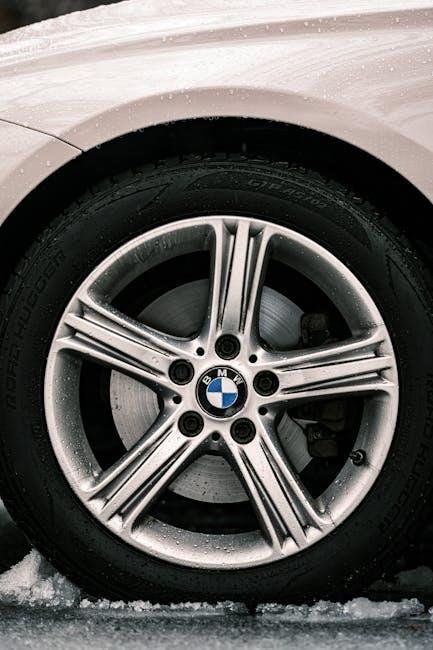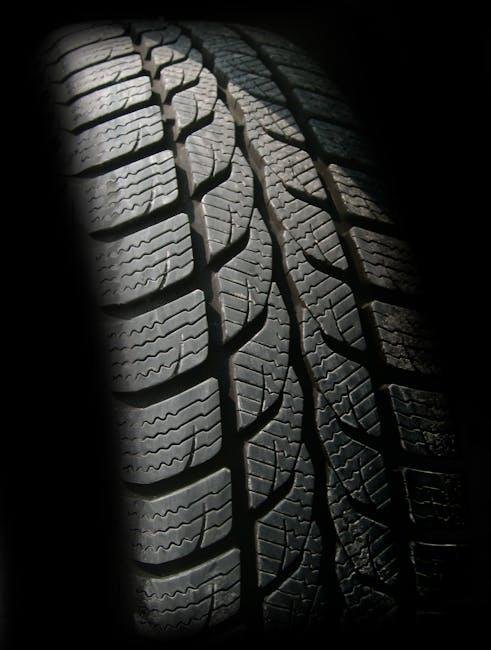As the days grow shorter and the air becomes brisk,winter approaches with its unique blend of beauty and challenges. For many, this season is marked by shimmering snowflakes and cozy evenings by the fire, but for drivers, it also signals the need for careful preparation. Winter weather can be harsh on vehicles,transforming roads into icy pathways and testing the resilience of even the most reliable cars. To navigate these frosty months safely and confidently, it’s essential to equip your vehicle with the right tools and knowledge. In this article, we’ll explore practical steps to prepare your car for winter, ensuring that you can embrace the season’s wonder while keeping your wheels rolling smoothly. Whether you’re an experienced winter driver or a newcomer to chilly commutes, these tips will help you face whatever the elements may bring.
Essential Maintenance Checks for Winter Readiness
As the chill of winter approaches, taking proactive measures to ensure your vehicle is in top shape is crucial for both safety and performance. Begin by inspecting your battery; cold temperatures can reduce its capacity dramatically. Check for any corrosion on the terminals and ensure that the connections are secure. If your battery is over three years old, consider having it tested or replaced to avoid being stranded in the cold.
Next, focus on your tires, as they are your car’s only contact with the road. Verify that your tires are adequately inflated, as colder air can reduce tire pressure. It’s also essential to check the tread depth; a good rule of thumb is to ensure you have at least 1/8 of an inch of tread. If you’re in an area prone to heavy snow, think about switching to winter tires.Additionally, don’t forget to check your windshield wiper blades and fluid levels.Ensure your wipers are functioning correctly and replace them if they leave streaks. Fill your windshield washer reservoir with a winter formula fluid that won’t freeze, maintaining visibility in harsh weather conditions.

Choosing the Right tires and Maintaining Traction
Winter conditions can be harsh on your vehicle, making it essential to choose tires that enhance performance and ensure safety. Opt for all-season or winter tires, as they provide the best grip and handling on snowy and icy roads. Winter tires are especially designed with a tread pattern that channels snow and slush, while their rubber composition remains flexible even in sub-zero temperatures. Consider the following factors when selecting your tires:
- Tread Depth: Deeper treads offer better traction.
- Rubber Composition: Softer rubber compounds provide better grip in cold weather.
- Type: Choose between studded and non-studded tires based on local regulations and typical road conditions.
Maintaining proper tire maintenance is key to ensuring optimal traction throughout the winter season. Regularly check your tire pressure, as it can drop with falling temperatures, affecting traction and stability. Additionally, ensure that your tires are aligned and balanced; this not only prolongs their lifespan but also improves handling. A simple way to assess tire health is to perform the quarter test:
| Test | procedure | Indicator |
|---|---|---|
| Quarter Test | Insert a quarter into the tread grooves. | If you see the top of Washington’s head, replace your tires. |
Following these guidelines will not only enhance your vehicle’s performance but also ensure peace of mind as you navigate through treacherous winter conditions.

Winterizing Fluids: What to Top Off and Why
As winter approaches, ensuring that your vehicle is equipped with the right fluids is critical to its performance and longevity. Fluids not only facilitate optimal operation but also protect crucial components from the harsh winter conditions. Here are key fluids to focus on:
- Antifreeze/Coolant: Check the levels and ensure the mixture is appropriate for your climate. A 50/50 mix of antifreeze and distilled water is ideal for freezing temperatures.
- Oil: Switching to a winter-grade oil can definitely help ensure smoother engine performance in the cold.
- Windshield Washer Fluid: Use a fluid that is specifically formulated for winter,containing antifreeze properties to prevent freezing.
- Transmission Fluid: Low temperatures can alter the viscosity of this fluid, leading to shifting problems.
- Brake Fluid: Proper fluid level and condition are essential for safety, especially on slick winter roads.
To assist in visualizing what needs to be checked, here’s a simple table summarizing fluid management:
| Fluid Type | Recommended Action | Importance |
|---|---|---|
| Antifreeze/Coolant | Check and refill | Prevents overheating and freezing |
| Oil | change to winter-grade | Ensures engine efficiency |
| Windshield Washer Fluid | Use winter formula | Maintains visibility |
| Transmission Fluid | Inspect and top off | Enhances gear shifting |
| Brake Fluid | Check level and quality | Critical for safe braking |

Emergency Kit Essentials for Unexpected Winter Journeys
When embarking on winter journeys, it is indeed crucial to prepare an emergency kit that can provide comfort and safety in case of unexpected events. Start with a sturdy blanket to keep warm and prevent hypothermia. Have a flashlight with extra batteries to illuminate your surroundings if you find yourself stranded at night. Essential first aid supplies, including bandages, ointment, and antiseptic wipes, can be a lifesaver if injuries occur. Don’t forget a small shovel to help you dig out of snowdrifts, and a cat litter or sand to provide traction if your tires get stuck.
Additionally, equip your kit with non-perishable food items such as energy bars, nuts, or dried fruit to sustain you in case of prolonged wait times. Having a water supply, like bottled water or purification tablets, is equally important to stay hydrated. A multi-tool can assist in various tasks, from fixing minor car issues to preparing food. For ultimate convenience, include a roadside assistance kit, which typically comes with flares and warning triangles to alert other drivers. By carrying these essentials, you ensure that you’re prepared for whatever winter throws your way.
The Conclusion
As the temperatures dip and the first flakes of snow begin to fall, ensuring your vehicle is winter-ready becomes a crucial task. Preparing your car for the challenges of winter not only enhances safety but also extends the life of your vehicle. From checking your tire tread to ensuring your antifreeze is at optimal levels, each step plays a vital role in safeguarding your journey.
Remember, winter driving can present unpredictable challenges, but with the right preparations, you can navigate the season with confidence. So, take the time to thoroughly inspect and equip your vehicle, transforming it into a reliable winter companion. By implementing these simple yet effective strategies, you’ll be ready to embrace the beauty and adventure of winter, no matter what awaits on the road ahead. Safe travels!


